Clascity Reviews and Testimonials
Clascity is a relatively new “skill-sharing” tutoring platform (launched in 2018) that has begun collecting positive feedback on niche sites. Its Product Hunt entry calls it the “Ultimate Knowledge-Sharing Platform” with a 5.0 rating (from 4 reviews). In tutor profiles on Clascity’s own site, teachers tout proven results: for example, one math tutor proudly notes he “has taught hundreds of students Algebra 1 and all of them have passed”. Another class listing advertises a free trial lesson for beginners, and tutors share success stories on their pages (e.g. “hundreds of … students with excellent grades and sweet success stories”). External review sites also highlight Clascity’s low fees and flexibility. An independent tutor-coach blog names Clascity as an alternative platform, praising its low 8% commission and customizable pricing. However, no major consumer-review sites (like Trustpilot) have many entries, so user experiences are mostly found on Clascity itself and blog listings.
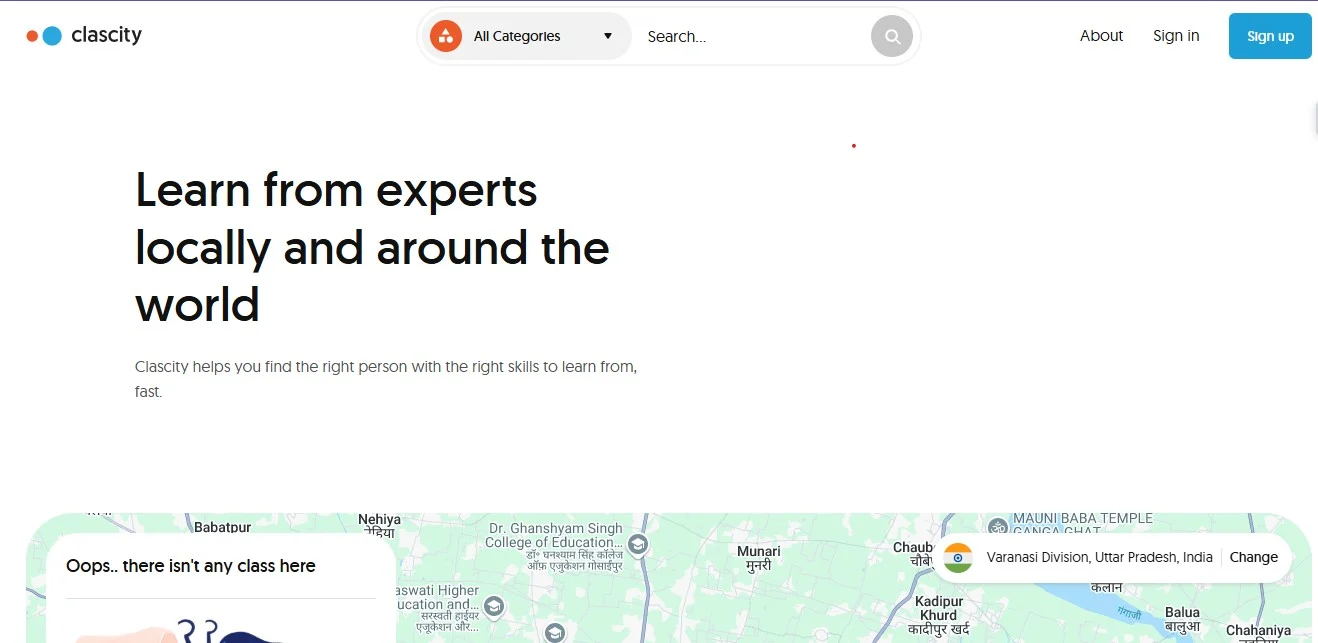
Is Clascity Legit?
Yes. Clascity is a legitimate, Canada-based company (Clascity, Inc.), founded by entrepreneur Caleb Lai. The site is active and well-documented: its official blog, help pages, and terms of use are all public. For example, the Product Hunt listing shows Clascity’s mission (“share your knowledge, build connections and inspire”) and positive reviews. The platform’s Terms of Use are transparent about billing, refunds, and safety policies. No credible sources label Clascity as a scam. In fact, the founder even engages in tutor communities to explain how Clascity works, emphasizing its 8% fee and no sign-up charge. The lack of major complaints and the presence of company information (founder story, launch date) indicate Clascity is a bona fide tutoring marketplace.
Clascity Pricing: Commission, Fees, and Policies
Commission and Tutor Rates: Clascity’s pricing is simple. Tutors set their own hourly rates, and Clascity charges only an 8% commission on each lesson (5% to the platform plus a 3% Stripe processing fee). This means tutors keep 92% of what students pay – a much lower cut than most competitors. For example, current tutor listings show hourly rates from about $15 (for math) up to $25 or more (for music). Because students pay the tutor’s fee with no extra platform markup, Clascity advertises “no hidden costs” for learners. In short, students pay only what the teacher asks, and tutors receive almost all of it after Clascity’s small commission.
Payment Structure: Students book classes and pay by credit/debit card. According to Clascity’s terms, student cards are charged immediately after each lesson ends. (Previous site copy says students are billed one day before the class, but the official policy is “after the scheduled end time”.) After a class, the lesson fee appears in the tutor’s account as “pending.” Clascity then holds the payment for about 7 days. During this week, tutors can choose to issue a refund if needed. After 7 days, the funds are released and the tutor can withdraw them (via PayPal worldwide, or local bank if in Canada). This payment delay gives a window to handle any disputes. In practice, that means tutors usually see money cleared in their account about a week after teaching.
Free Trials and Refunds: Clascity does not have a platform-wide “free trial” program, but individual tutors may offer trial sessions. For instance, one piano teacher advertises “one Free Trial Lesson” in her listing. Any tutor can use promotions or first-lesson discounts at their discretion. As for refunds, Clascity’s official policy is strict. Tutors can issue refunds on a per-lesson basis, but only within 4 days of the lesson payment. Beyond that, Clascity will only process refunds at its own discretion. For multi-lesson packages, students can cancel before the first class without charge; canceling after the first lesson typically triggers only a 50% refund on remaining sessions. If a tutor cancels a paid lesson, students get a full refund for the unused portion. Notably, if a student simply misses a lesson without notice, Clascity generally does not refund (to protect the tutor), unless the tutor manually refunds it.
Sample Clascity Pricing Page
Clascity’s own pricing page confirms these figures: “We only take a tiny 8% commission” and students pay no platform fee. This makes Clascity cheaper for tutors than big sites that charge 25-50%. The official pricing page (and tutor sign-up page) is linked below for reference.
Alternatives to Clascity
Several other tutoring platforms compete with Clascity. Notable alternatives include:
- My Engineering Buddy (MEB): A service aimed at college and engineering students. MEB provides 24/7 one-on-one tutoring and homework help in “100+ advanced subjects” (physics, engineering courses, data science, etc.). It offers a $1 trial lesson and stresses “100% human” tutors (no AI). Pricing starts around $20/hour, and MEB handles all matching for you (no independent class listings). It’s ideal for STEM majors needing instant help.

- Varsity Tutors: A well-known US-based site for K-12 and college tutoring. Varsity carefully vets tutors (accepting ~10% of applicants) and offers rigorous one-on-one or group sessions. Their rates are higher (from about $60/hr), but they promise top credentials and a money-back guarantee. Varsity is good for personalized, premium tutoring.
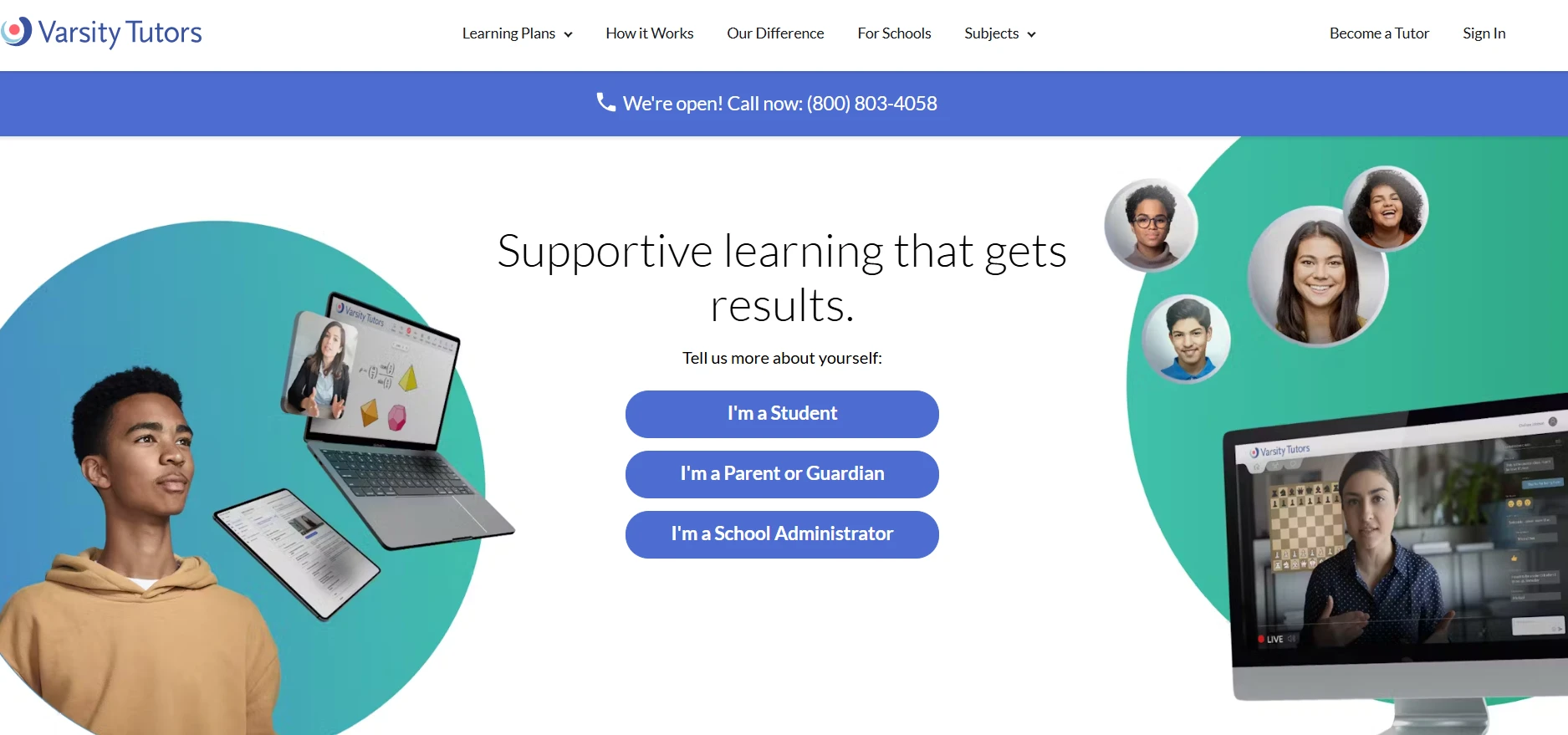
- Wyzant: A large marketplace where tutors set their own rates, much like Clascity. Wyzant has thousands of tutors in 300+ subjects. Pricing varies by tutor (some start low, others are premium). Unlike Clascity, Wyzant focuses on American K-12 and college subjects. It offers a transparent review system so students can pick tutors with proven ratings.

- Tutor.com and TutorMe: These are global on-demand tutoring networks. Tutor.com (used by many US institutions) offers instant help 24/7 and charges about $40/hr. TutorMe provides access to tutors in 300+ subjects for about $26/hr. Both guarantee quick matches and virtual classroom tools, but come with higher costs. They are mainly for traditional academic subjects (math, science, etc.).
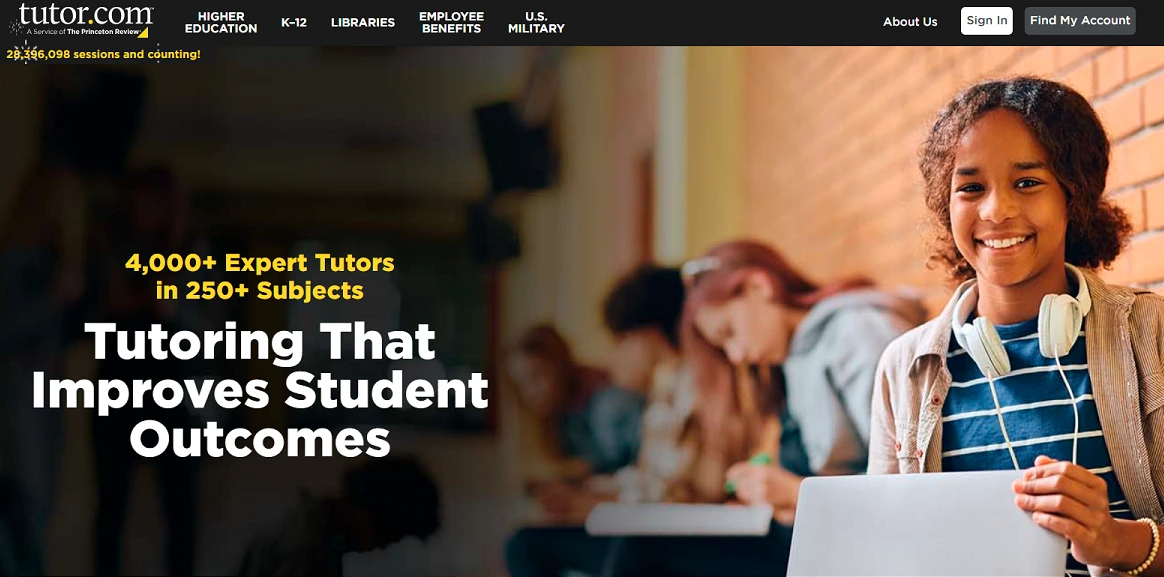
- Preply: Focused on language learning, Preply lets students book lessons with tutors around the world (e.g., English, Spanish, etc.). Tutors set hourly rates (typically starting around $15/hr). Preply has a user-friendly video classroom and flexible scheduling. While Clascity covers a broad range (including languages), Preply is specialized for language practice.
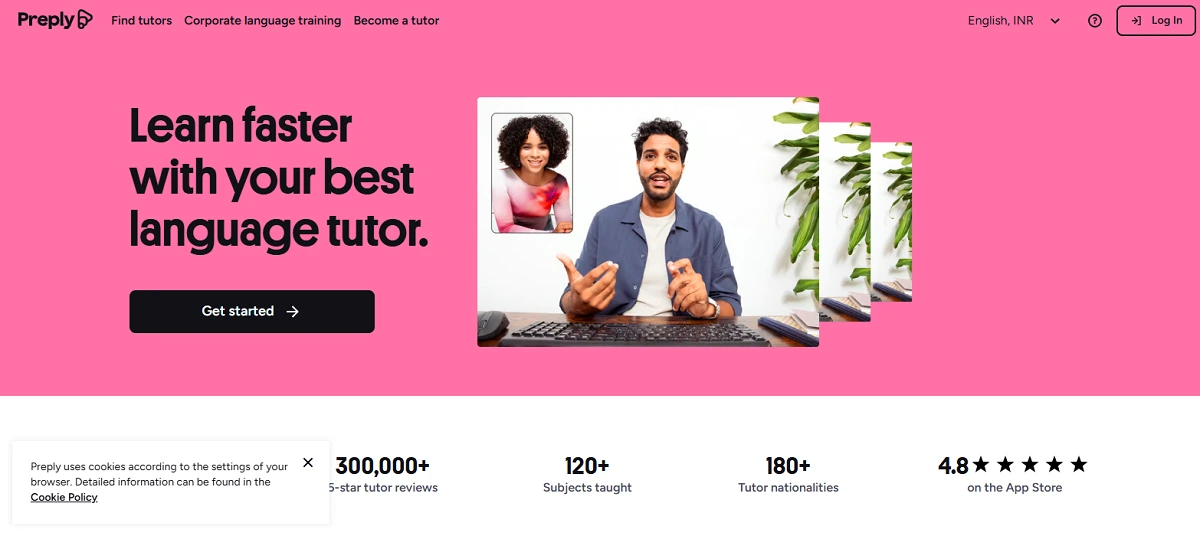
- Other Sites: Platforms like Cambly (conversational English), Skooli, Brainfuse, and even Chegg Study offer tutoring or homework help. Each has its niche: for example, Skooli is K-12 online tutoring ($49/hr), while Brainfuse partners with schools. MyEngineeringBuddy’s blog also lists some global services for college tutors. In summary, students often try multiple platforms. Clascity’s niche is “skill sharing” beyond academics, whereas others focus on school/college subjects or test prep.
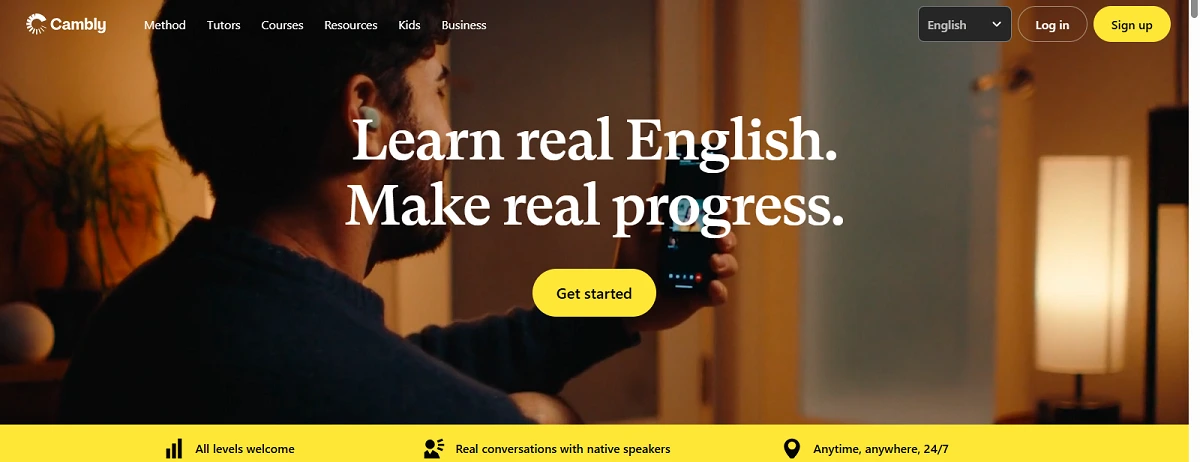
How Clascity Works
Clascity operates as a two-sided marketplace. Both students and tutors sign up (one account works for both roles). For students: You browse or search the class catalog (by subject, location, or online) and see listings posted by tutors. Each class shows the tutor’s profile, experience, lesson price, duration, and curriculum. You book by adding a class to your cart and confirming one day before the scheduled time (payment is processed immediately after the lesson ends). You can message tutors, view tutor reviews (on Clascity or external blogs), and reschedule/cancel up to 24 hours in advance. After each lesson, you can rate the tutor. There are no extra platform fees, so you simply pay the listed price (e.g. $15 for an hour of algebra).
For tutors: You register (free) and create “classes” or tutoring offerings. The help center shows this is easy: fill in title, description, subject category, price, duration, and curriculum outline. You can list one-off classes, recurring sessions, or packages. After publishing, students can book your classes. When a lesson is booked, the student’s payment is “pending.” It becomes available 24 hours before class. After you teach, the system processes the payment. The fee (minus 8%) appears in your dashboard. You can withdraw funds after 7 days (PayPal or bank). The platform handles billing and scheduling so tutors can focus on teaching. All tutoring (in person or online) is managed through Clascity’s calendar and video chat tools, and Clascity alerts tutors and students about any changes.
FAQs for Tutors on Clascity
Q: How do I create a class? A: Clascity’s teacher FAQ outlines a step-by-step process. You go to the “Create Class” page, enter basic info (title, description, category), set your booking details (price, duration, max students) and outline the curriculum. Add any images or materials, then publish. Keep your profile updated so students can see your credentials. (See Clascity’s guide.)
Q: Can I set my own rates? A: Yes. You choose your hourly fee. Clascity only charges 8%, so you keep most of what you charge. For example, tutors on Clascity currently charge from about $15/hr (for high school math) up to $25/hr or more (for music or advanced topics).
Q: How will I get paid? A: After each completed lesson, payment appears in your Clascity account. The amount (minus Clascity’s 8%) is pending for 7 days. Once the hold period ends, you can withdraw via PayPal or (if in Canada) a local bank transfer. Clascity’s FAQ confirms this process: payments show as “pending” 24h before class and become available after class.
Q: What if a student cancels or no-shows? A: If a student cancels a lesson, Clascity’s policies apply (they can usually cancel before class without charge, or follow the refund rules in packages). If a student simply doesn’t show up, the tutor generally keeps the lesson fee (Clascity says no automatic refund for no-shows). However, as a tutor you have the option to manually refund the student via the platform if you choose. If you (the tutor) must cancel a scheduled lesson, you should cancel in the “Class Progress” page, and any paid sessions may be refunded according to the package policy.
Q: How do I handle schedules? A: Tutors can use Clascity’s calendar to block out availability and manage bookings. You can reschedule or cancel classes easily up to 24 hours in advance. If a student reschedules, Clascity notifies you automatically. You can also skip or pause a lesson if needed – just update the booking so the student is informed.
Q: How and when do I give refunds? A: Clascity lets tutors issue refunds via the transaction page, but only within a limited window. The policy states refunds must be done within 4 days of the original payment. After that, the payment is final unless Clascity intervenes. For package lessons, if you as the tutor cancel one session, the remaining sessions’ fees are refunded 50% to the student. If a tutor cancels a package outright, the student gets 100% back on the rest.
Q: How do students find my class? A: Clascity promotes classes via its search and browsing tools. Students search by subject, skill, or location. It also highlights featured classes on category pages. Good reviews and complete profiles help students discover a tutor. For tips on promotion, Clascity’s blog suggests things like SEO and social sharing (see their blog posts).
Company Information: Founding, Mission, and Services
Clascity was founded by Caleb Lai, a former swimming instructor turned UX designer. The idea came from his belief in “skill sharing” – many people have talents to teach and skills to learn. He launched the site in October 2018 as a place where “every individual is blessed with a unique talent”. The company is based in Canada, and Lai also co-founded a UX design startup (Alphaio). Clascity’s mission is to help people “learn, grow, and achieve greatness” by connecting them with experts.
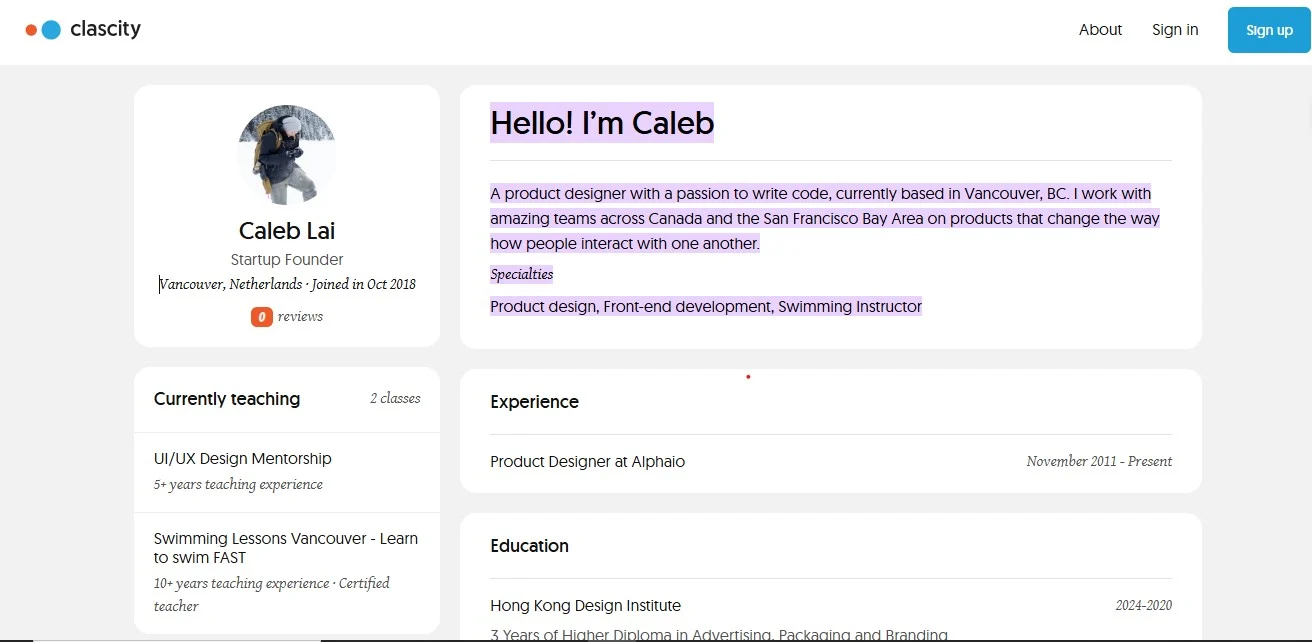
The platform’s services cover a wide range of subjects and activities. Its navigation lists categories from Academic Tutoring (math, science, languages) to Sports & Fitness, Music, Visual Arts, Digital Media, Cookery, Finance & Business, and more. In practice, this means you can find academic tutors (algebra, physics, etc.) as well as life skills classes (guitar, cooking). Tutors can offer one-on-one sessions or live group classes (Clascity even advertises “live-streamed classes” where hundreds of students join). Essentially, Clascity treats anything you want to teach or learn as a possible class, making it broader than purely academic platforms.
Clascity’s vision emphasizes community. The homepage declares: “Clascity is created for everyone to share their talents… find the best teachers in their community”. It values peer-to-peer learning: students can even register as teachers, and vice versa. The Product Hunt description echoes this idea of inspiring knowledge-sharing. Globally, Clascity invites connections “locally and around the world”, suggesting an open, worldwide network of tutors.
Unique Selling Points (USPs) of Clascity
- Low Fees: Only 8% commission (with no extra charges to students) is a major draw. This is far lower than many competitors (which often charge 25–50%).
- Wide Subject Range: Tutors can teach academic subjects (math, science, languages, etc.) as well as creative and practical skills (music, art, fitness, cooking, languages, tech, business, etc.). This breadth means users can use one platform for many different learning goals.
- Flexibility for Tutors: Tutors set their own schedules and prices. They are never locked into long contracts or subscription tiers. The platform provides management tools (calendar, chat, progress tracking) so independent tutors can easily run their own business.
- No Student Fees: Unlike some sites, Clascity has no platform “add-on” charge. Students pay exactly the tutor’s rate. The homepage even boasts “no pesky platform fees”, making lessons more affordable.
- Group Learning Options: Clascity offers “live-streamed classes” for many students at once}. This is relatively uncommon on peer-to-peer tutor sites and allows for webinar-style lessons or workshops.
- Convenient Scheduling: The system allows last-minute changes: students and tutors can reschedule or skip a lesson up to 24h in advance. This “Never miss a class” feature adds convenience. Automatic notifications ensure both sides stay in sync.
Drawbacks of Clascity
- Limited Reputation Data: Because Clascity is newer and smaller, there are few third-party reviews. Many classes currently show 0 student reviews (as seen on tutor profiles). This can make it hard for new students to assess tutor quality. Unlike big brands, Clascity lacks a large user base or brand recognition.
- Independent Tutors Only: Clascity does not vet tutors with formal credentials or background checks (they are encouraged but not required). That means tutor quality can vary widely, and students must judge credentials themselves. Clascity disclaims any guarantees, so this model relies on user ratings and self-motivation. (For parents concerned about safety, this may be a downside.)
- Payment Delays: Tutors must wait 7 days to withdraw earnings. Some may prefer faster payouts. Also, only PayPal or Canadian bank transfers are supported, limiting withdrawal options for tutors in other regions.
- Refund Risks: The refund policy is strict. Tutors can issue refunds only within 4 days, and a student who misses a class usually won’t get money back. This protects tutors but can upset students. Some may find it less flexible than platforms with satisfaction guarantees.
- Platform Support: Clascity is primarily self-service. There is an online help center and ticket system, but no 24/7 live support. For complex issues, users must wait for email responses. Also, Clascity’s policies (e.g. on cancellations) can be confusing and differ for packages vs single lessons (students must carefully read the FAQ).
- Global Focus vs Localization: While Clascity is worldwide in theory (“anywhere on the planet”), in practice the site is English-only and most tutors seem North American or Canadian (e.g. profiles from USA and Canada). There is no multi-language interface or localized site for other countries yet, which could limit adoption outside English-speaking markets.
Comparison with My Engineering Buddy
Audience and Subjects: MyEngineeringBuddy (MEB) specifically targets college and engineering students, whereas Clascity serves a broader audience. MEB advertises help in advanced subjects like engineering, physics, data science, etc., while Clascity offers everything from high-school algebra to yoga or painting classes. In short, Clascity is multi-disciplinary, whereas MEB is STEM-focused.
Payment & Fees: Clascity tutors earn 92% of fees (8% platform cut), and students pay exactly the tutor’s rate. MEB’s pricing model is different: students contact MEB directly (no signup) and pay MEB per hour. MEB’s site shows tutoring starts around $20/hr and emphasizes “no hidden fees”. MEB does not publicly show a tutor commission rate (it may pay tutors a salary or cut), but it handles all scheduling and guarantees. Clascity’s advantage is transparency (each tutor keeps most of the money), while MEB’s tutors don’t set their own prices.
Tutor Requirements: Clascity allows virtually anyone with expertise to sign up (with no strict vetting). MEB claims to hire “only the brightest tutors from top universities”, suggesting more selective recruitment. MEB also offers a money-back guarantee on results (per its founder’s statement), which Clascity does not provide. On the other hand, Clascity gives tutors full control over how they teach, whereas MEB likely assigns tutors to students on demand.
Technology and AI: MEB explicitly advertises “Zero AI – 100% Human” tutoring. Clascity has not made such claims; its focus is on human tutors. Looking ahead, industry experts note that tutoring platforms are beginning to integrate AI/ML for personalization and adaptive learning. It’s unclear whether Clascity plans any AI-driven features. If it does, that would contrast with MEB’s strictly human model.
Availability: MEB offers 24/7 on-demand help (students can message tutors at any time). Clascity is more schedule-based: classes occur at set times agreed by teacher and student. Both platforms allow online lessons, but Clascity also includes in-person local sessions. In terms of geography, MEB serves major markets (US, UK, Canada, Australia, etc.) through its global team, while Clascity’s user base seems centered in North America, with some global reach online. Ultimately, a student needing quick academic help might choose MEB or Tutor.com, whereas someone looking for a flexible coach in any subject (including non-academic skills) might prefer Clascity.
Customer Support and Policies
Clascity provides a comprehensive online help center covering support and policies. Users (both students and tutors) can submit support tickets via an on-site form. The FAQ section is organized by topic (Payment, Scheduling, Refunds, Safety, etc.) and answers most common questions (e.g. “How will I be paid?”, “How do I refund a student?”). There is no published phone number or chat support – all inquiries go through email tickets.
The terms of service and privacy policy are available on the site footer. They spell out key policies: payment timing (students authorize card charges after lessons), refund rules, and disclaimers (for example, “refunds at sole discretion of Clascity”). Importantly, Clascity’s terms make it clear that tutors are independent contractors (no background checks are performed by Clascity). This means Clascity’s liability is limited – they state they do not vet users. Users must rely on tutor ratings and discretion.
Overall, Clascity’s support structure is lean. It covers the basics well (booking, payment, disputes), but complex issues may take time to resolve via the ticket system. There are standard policies for cancellations and refunds (see above), and Clascity reserves the right to update them. For any policy or technical questions not covered in the FAQ, the site instructs users to “contact us”. In short, customer support is mainly self-serve, and Clascity’s official pages should be consulted for the latest rules and contacts.
Global Reach and Localization
Clascity is designed as a global platform. Its homepage proclaims you can learn “anywhere on the planet” from experts worldwide. In practice, many tutors are located in North America (for example, a tutor profile shows “Greeneville, United States”, another shows Vancouver, Canada). Online classes can connect any student to any tutor, so geography is flexible. There is no indication of geographic restrictions beyond this. The site itself is in English, and tutoring sessions are mostly in English, though tutors can advertise other languages. For instance, one tutor lists lessons in English, Cantonese, and Mandarin. This suggests Clascity may attract bilingual tutors in regions like Asia or Canada. However, there is currently no dedicated Spanish, French or other language interface – it’s up to tutors and students to agree on language. So while Clascity has global ambition (and cites launched markets like US, UK, Australia, Gulf, etc.), its content and support are all in English. In 2025 they may expand to other locales, but for now the platform is essentially English-speaking global.
Clascity’s Future Plans
Clascity has not publicly outlined a detailed roadmap, but we can infer some trends. The entire online tutoring industry is moving toward more AI/ML integration for personalized learning. Features like intelligent tutor matching, adaptive lesson plans, or automated scheduling might be on the horizon. Clascity’s competitor (MEB) explicitly brands itself as “Zero AI”, so Clascity may choose a different path if it wants to stand out (possibly embracing AI tools for tutors or students). Another likely focus is scaling: as user numbers grow, Clascity may add new categories, languages, or partnerships. For example, they might incorporate AI-driven tools (chatbots, content recommendations), though they haven’t announced anything. One sign of future growth is their blog and newsletter – new articles like “Skill Sharing” guides and SEO tips suggest they’re investing in community building. In short, Clascity seems poised to deepen its tech features and expand into new subjects, while keeping its core mission of peer tutoring. (Any upcoming changes would presumably be announced on the blog or newsletter.)
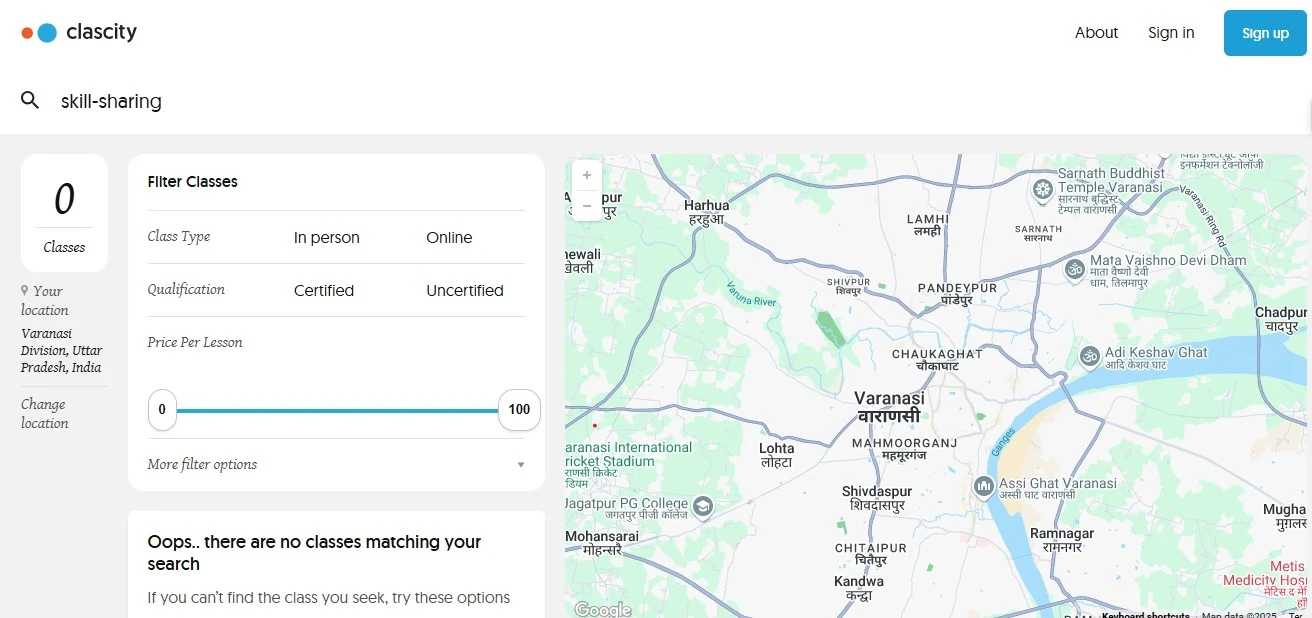
FAQs About Clascity
Q: What is Clascity? Clascity is an online tutoring marketplace (a “skill sharing” platform) where independent tutors offer classes in a wide range of subjects. It connects students with tutors for one-on-one or group lessons, handling scheduling and payments. Tutors set their own rates, and Clascity takes only 8% of each lesson. There are no subscription fees for users.
Q: Who owns or runs Clascity? Clascity was founded by Caleb Lai, a Canadian entrepreneur. He launched the site in 2018 and runs it as Clascity, Inc. The company has a blog and public presence (for example on Product Hunt). There are no silent or unknown owners – the platform’s leadership is open about its mission of sharing talents.
Q: Is Clascity free to use? Yes and no. Students can register and take classes without any platform fees; they only pay the tutor’s fee. Tutors sign up for free as well – there are no signup or listing charges. The only fee is the 8% commission Clascity collects from each paid lesson.
Q: How safe is Clascity for students? Clascity provides standard online protections (encrypted payments, support channels). Tutors are reviewed only by past students (no formal vetting or background checks are done by Clascity). The platform advises tutors to have criminal background checks available, but does not enforce it. Therefore, students should review tutor profiles carefully (experience, ratings, teaching style) and use the messaging feature to gauge a tutor before booking. Most users report no safety issues, but it’s wise to follow standard precautions when meeting any new online instructor.
Q: How do I sign up as a tutor on Clascity? Simply go to the sign-up page and create an account (you can use email, Google, or Facebook). One account works for both teaching and learning. Then log in and click “Teach a class” (or “Create Class”) to list your offerings. You’ll fill in details like price, subject, duration, and curriculum. Once published, students can book your classes. (See the tutor guide in the FAQ for step-by-step help.)
Q: What is the refund policy on Clascity? Clascity’s refund rules are strict. Tutors have a 4-day window to refund a lesson if needed. After that, refunds are not automatic. For packages of lessons, students can cancel before the first class for a full refund; after the first class, only 50% of remaining fees are returned. If a tutor cancels a package, the student gets 100% back for unused lessons. No-shows get no refund by default. Essentially, if you are the student, make sure to agree on details ahead of time; if you are the tutor, note that you can only give refunds within a few days.
Q: What are some alternatives to Clascity? As noted above, alternatives include: Tutor.com (instant help in many subjects), Varsity Tutors (rigorous, $60/hr), Wyzant (large tutor marketplace), Preply (language lessons), and MyEngineeringBuddy (college/engineering tutoring). Each has its strengths (e.g. 24/7 availability, heavy vetting, or specialized subjects). Students and tutors often try multiple sites to see which fits their needs best.
Conclusion
Clascity is a legitimate, fast-growing skill-sharing platform that stands out for its low fees and wide range of subjects. As its website proclaims, Clascity exists “to help you learn, grow, and achieve greatness”. Students enjoy paying only the tutor’s rate (no hidden costs), while tutors benefit from keeping most of their earnings (92% after an 8% commission). Unlike some expensive or narrowly focused services, Clascity is open to virtually any kind of class – from calculus and physics to piano and yoga. That versatility is its unique selling point. On the downside, Clascity is still building its community, so reviews and safety guarantees are limited. Users should carefully vet tutors themselves. Clascity’s policies (scheduling, refunds, etc.) are clearly documented, but somewhat strict in favor of tutors. Overall, Clascity offers an attractive, affordable option for learners and educators who value flexibility and variety. Its USPs include low commissions, no student fees, and global reach. For students in rich countries (US, UK, Australia, Gulf, etc.), it can be a useful complement to established tutoring brands. As the platform matures, it will likely add more teachers and possibly new tech features. For now, Clascity succeeds at its core goal: a community-driven marketplace where anyone can share a talent or learn a new skill. Prospective users should weigh its advantages (cheap, broad, flexible) against the current limitations (few reviews, self-verified tutors). In summary, Clascity is a real, innovative service for 2025 – just be sure to understand its commission (8%), booking system, and refund rules before diving in.
Sources: Official Clascity website (pricing, help center, blog), Research.com (tutoring platform comparisons), etc.

